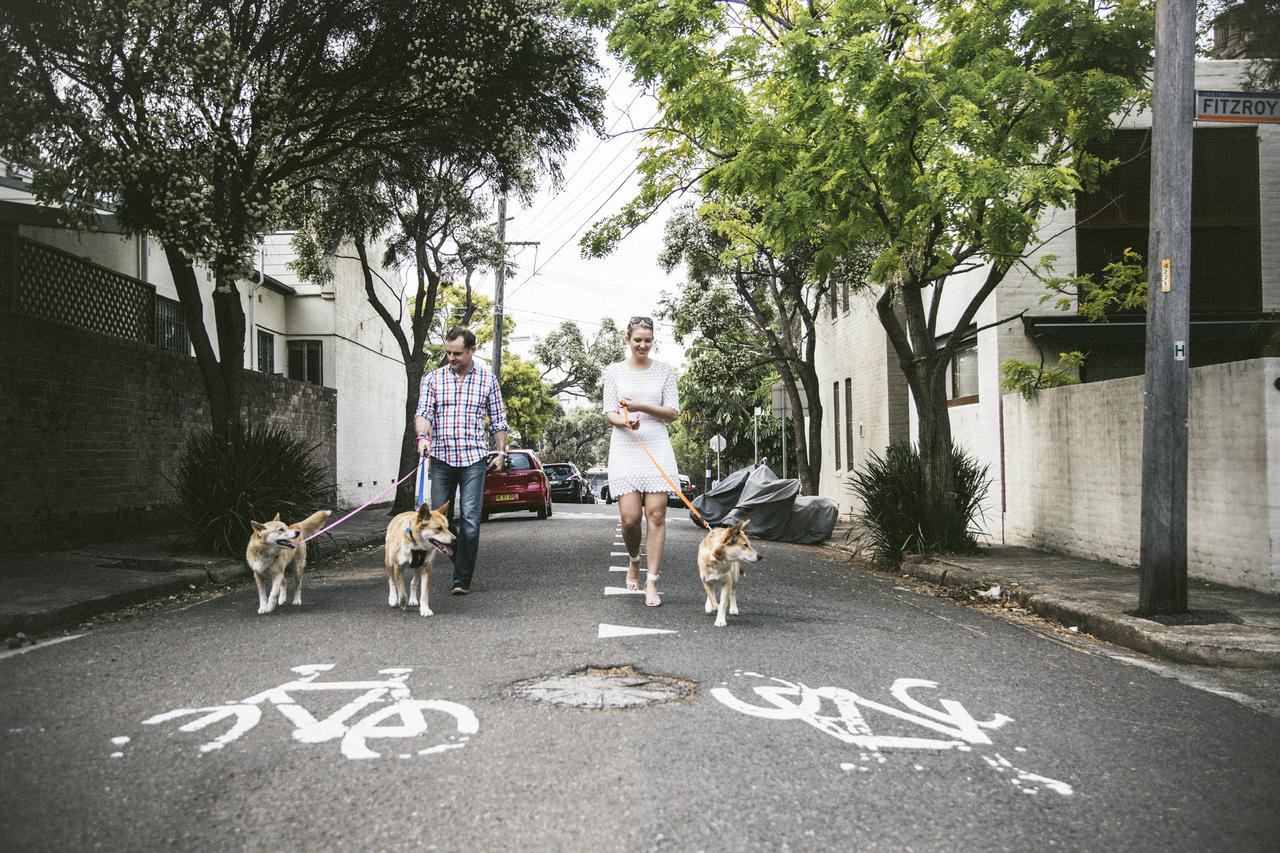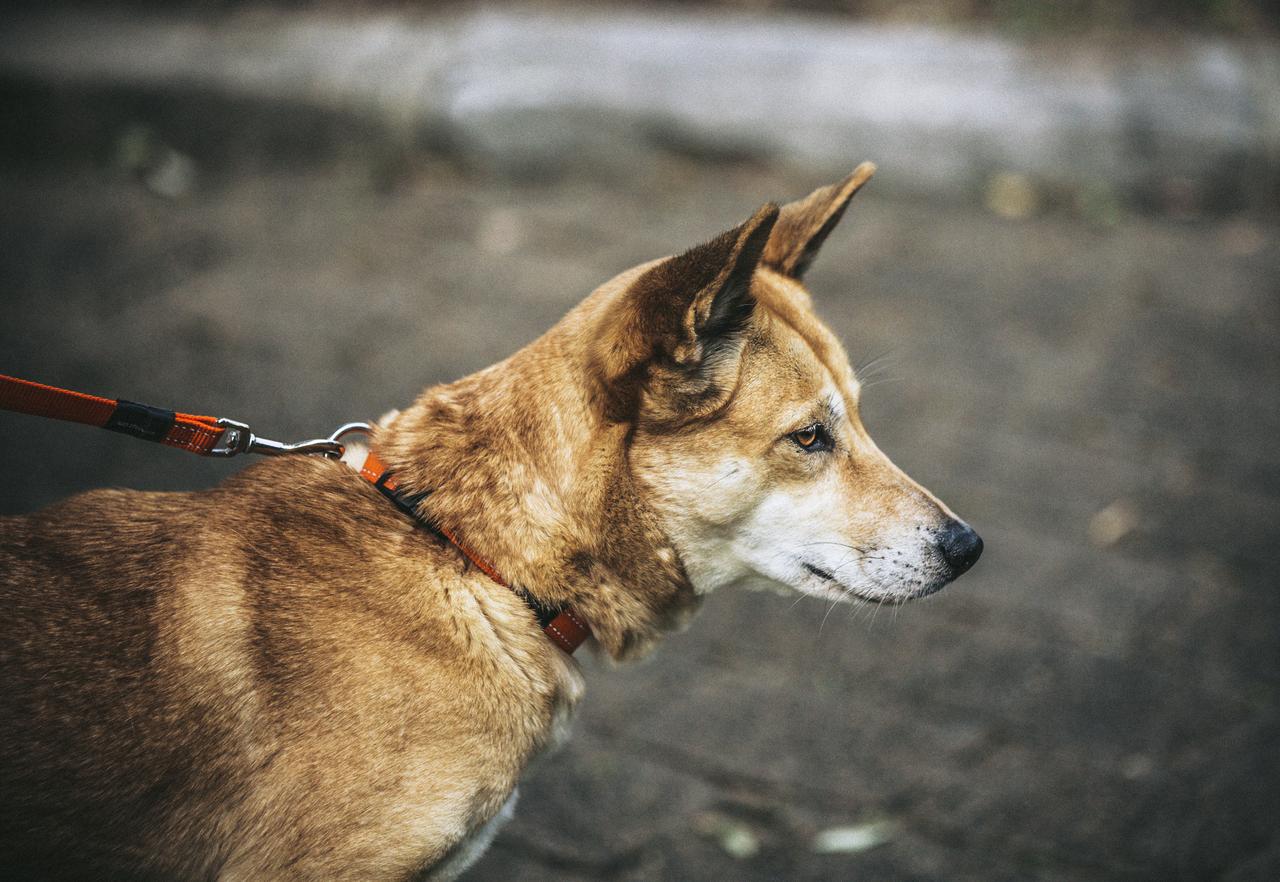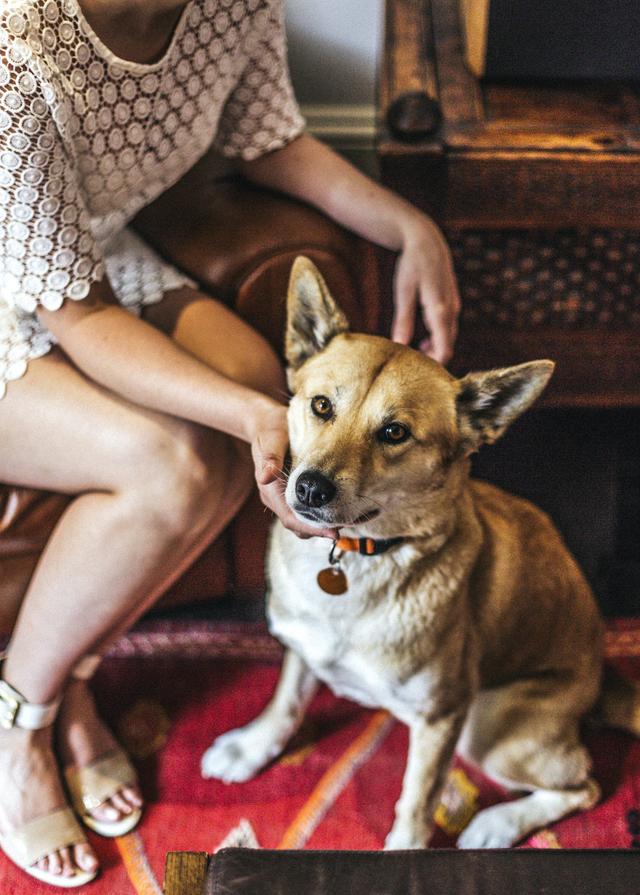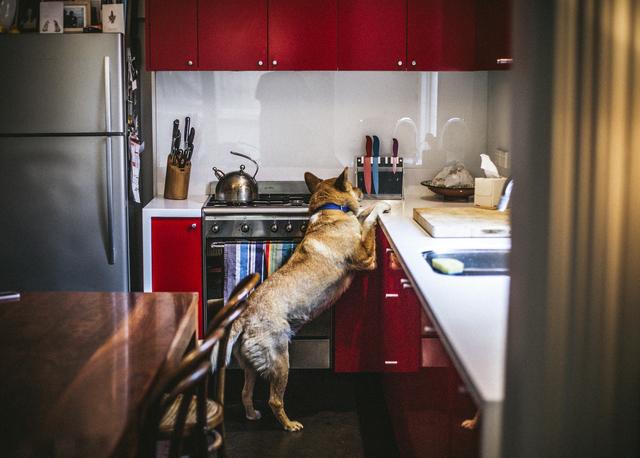Australia’s prowling predator is either a vicious wild dog that attacks children and devours farm animals, or a loving and devoted pet as cuddly as a kitten. It just depends on whom you ask.
tt Hutchings, forty-two, and his partner Desiree Hemberger, thirty-one, look like your typical professional couple, and in many ways they are. Hemberger is a corporate consultant. Hutchings is a lawyer. They have no kids yet—“We’re thinking next year,” says Hemberger. They work long hours.
Their small Victorian terrace house is set in the neighborhood of Newtown, a hub for the more eccentric members of Sydney society. In recent years though, the musicians and hippies have made way for young professionals with schnauzers on leashes and babies in Bugaboo prams.
The first signal to visitors that something is different about the Hutchings-Hemberger household is at their front door. During the day, canine claws click-clack on the wooden floors while excited snufflings and whining are heard, but no barking. It’s a different situation at night. When darkness descends and fruit bats fly through the air, one might hear three sets of piercing howls, a sign that the couple’s pack of pure-bred pet dingoes—Gerda, Persephone and Bear—are excitedly welcoming their owners home.
Canis lupus dingo is Australia’s only native dog species. They appear in archaeological records in Western Australian rock paintings and recent DNA testing suggests they may have been here as long as 18,000 years. Like wolves, dingoes are a primitive dog species—a living, breathing ancient ancestor of your pet pug. Since they are more closely related to a wolf than a pug, they are not, however, common pets. Mention you are on your way to visit some “pet dingoes” and you are likely to get a shocked response followed by questions about the danger involved.
Pet dingoes look deceptively like any other dog. The honey-coloured trio wear collars. They walk on leashes. They visit the dog park. But it would be a mistake to lump them in the same basket as the fat Labrador across the road. Their inability to bark is just one of the many things distinguishing dingoes from their domestic cousins. “It can be disconcerting. As our plumber said, if they were barking it’d be fine. Their silence freaks people out,” says Hutchings.
Also unlike typical domestic dogs, dingoes are used to highly developed social structures that require complex and high-maintenance relationships between the dogs and their owners...
This is an excerpt of 'A Dingo Ate Australia', a story published on Narrative.ly. Read the whole story.
Photos by Angus Lee Forbes.






